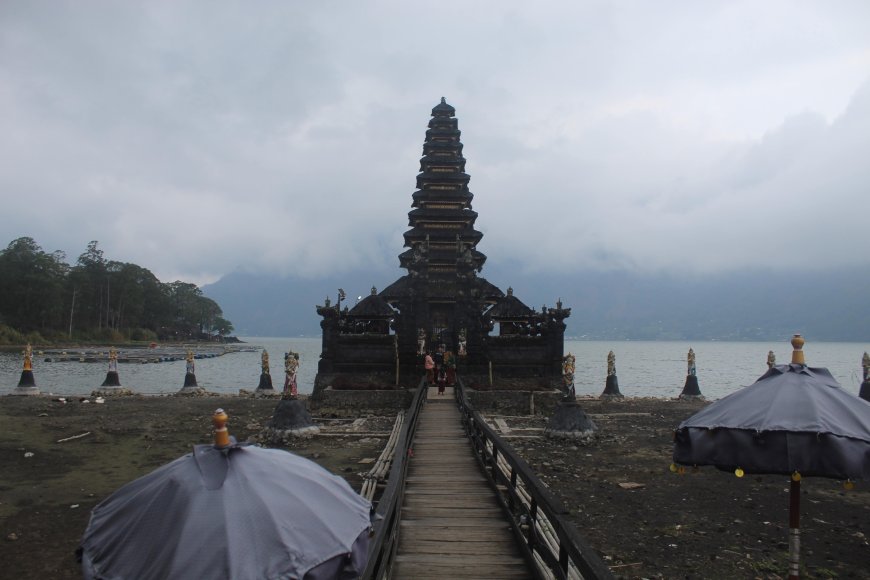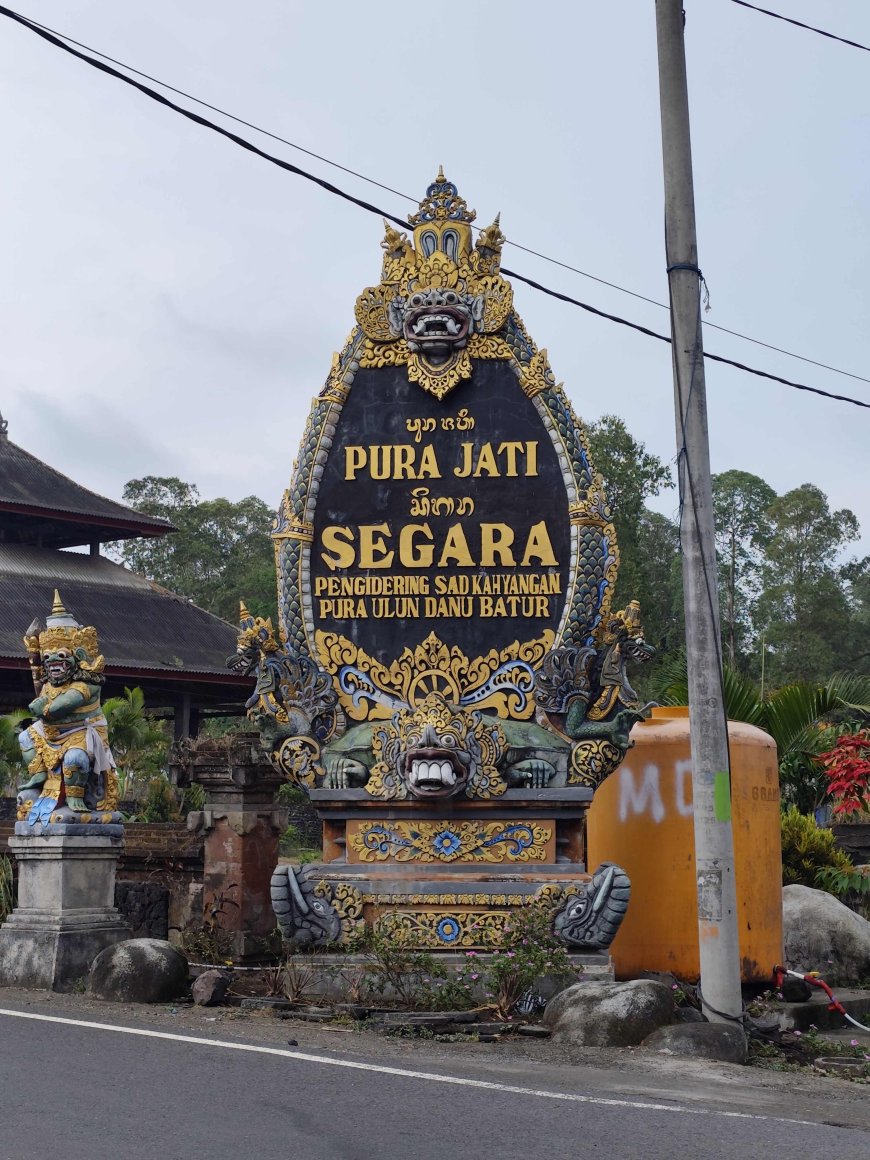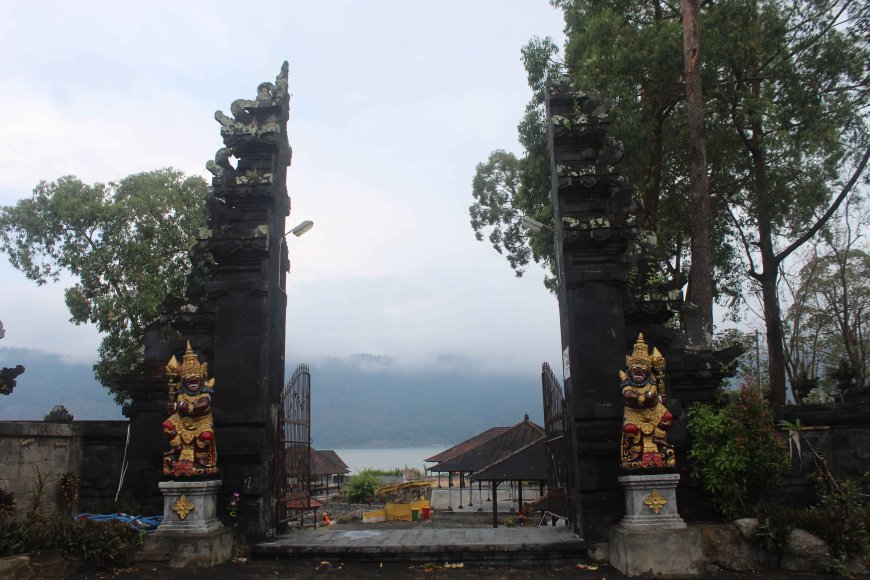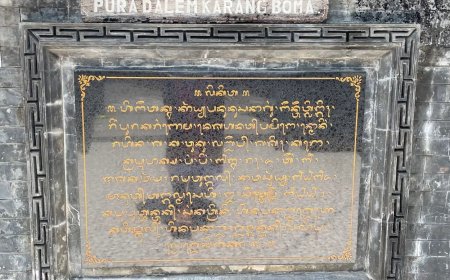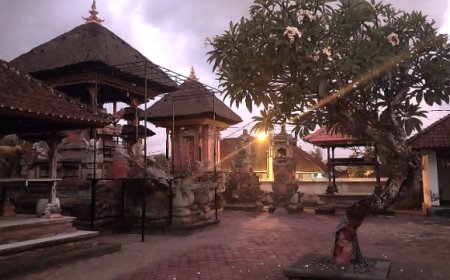This image shows the majestic main gate of Jati Segara Temple, with two formidable Dwarapala guardian statues standing on each side. The Dwarapala, deities depicted in a fearsome yet protective form, symbolize the safeguarding against negative energies that might enter the temple area. The black gate is made from volcanic stone commonly used in Balinese temple architecture, providing a strong and sacred impression.
Beyond the gate, a serene view of misty mountains and a sprawling lake is visible, offering a mystical and calming ambiance. This natural landscape seems to merge with the spirituality of the temple, creating a peaceful atmosphere for visitors who come to pray or seek inner peace. The combination of beautiful temple architecture and the stunning natural backdrop of Bali underscores the close connection between humans, nature, and spirituality in Balinese culture.
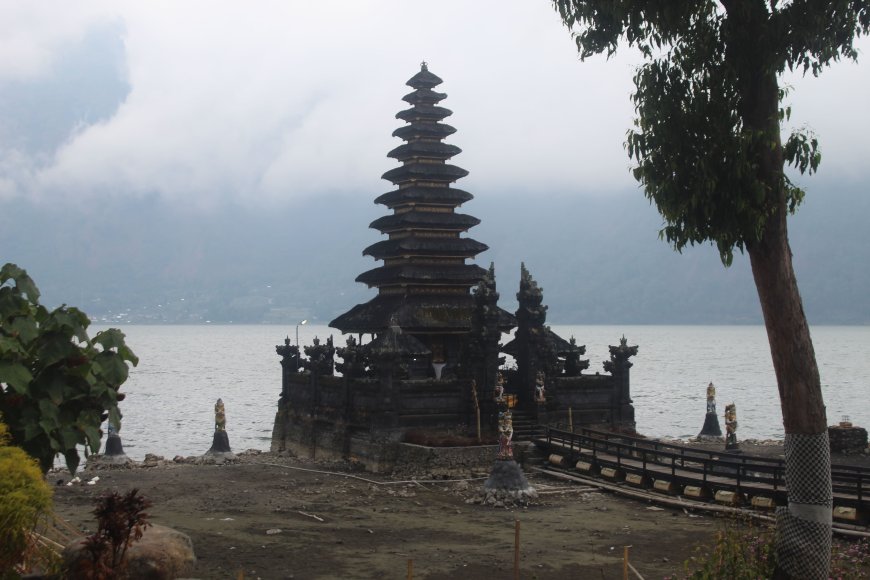
Jati Segara Temple (Photo Source: Personal Collection)
The architecture of the temple depicted in the image above features a multi-tiered meru, serving as a place of worship for Hindu deities. Surrounding it are guardian statues that uphold the sanctity of the temple, along with a small bridge connecting the temple to the mainland, adding a dramatic touch to the structure that appears to float above the lake's water.
Pura Jati Segara is not only a site for offerings and religious ceremonies but also a captivating spiritual tourist destination that attracts many local and international visitors. The natural beauty of Bedugul, often enveloped in a light mist over the lake and mountains, provides a sense of tranquility and peace for anyone who visits.
This temple symbolizes the harmony between humans and nature, illustrating the significance of water as a source of life within Balinese culture. As part of the temple complex around Lake Beratan, Pura Jati Segara offers a profound religious and cultural experience, making it one of the most iconic tourist attractions in Bali.
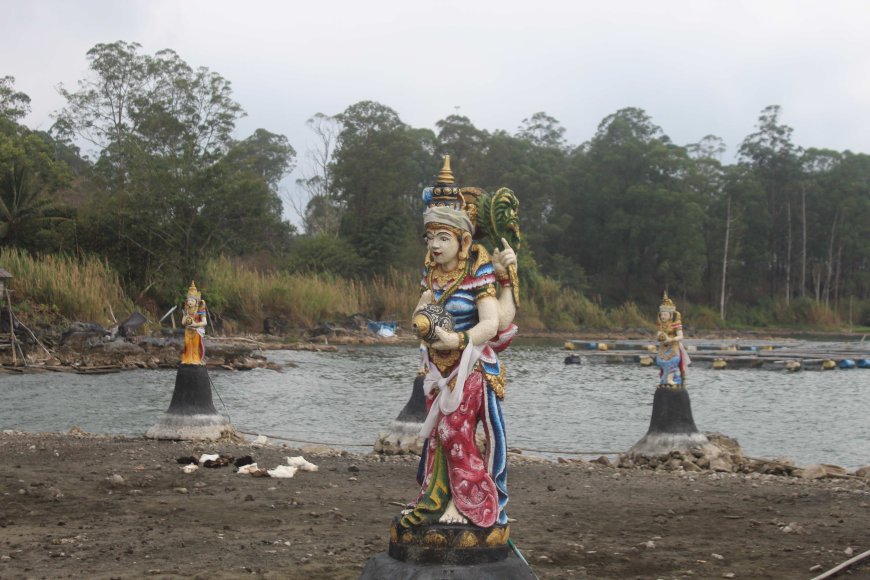
The statue is analogized as Ida Bhatara Sakti Bhujangga Luwih, Jati Segara Temple (Photo Source: Personal Collection)
The image depicts a statue that we will see when entering the temple area. This statue is analogized as Ida Bhatara Sakti Bhujangga Luwih, an important manifestation in Balinese Hindu belief. Ida Bhatara Sakti Bhujangga Luwih is often associated with spiritual power and protection. In this statue, the figure is portrayed with intricate ornamental details, wearing traditional Balinese attire adorned with striking gold, blue, and red accents.
This statue symbolizes the sacred strength and high wisdom possessed by Ida Bhatara. Furthermore, its position by the lakeside reflects a close relationship with the element of water, which is believed in Balinese Hinduism to be a source of life and spiritual purification. The presence of this statue at Pura Jati Segara, which is a water temple, indicates how Ida Bhatara Sakti Bhujangga Luwih serves as a protector and giver of blessings, particularly in maintaining the balance of nature and the lives of the surrounding community.
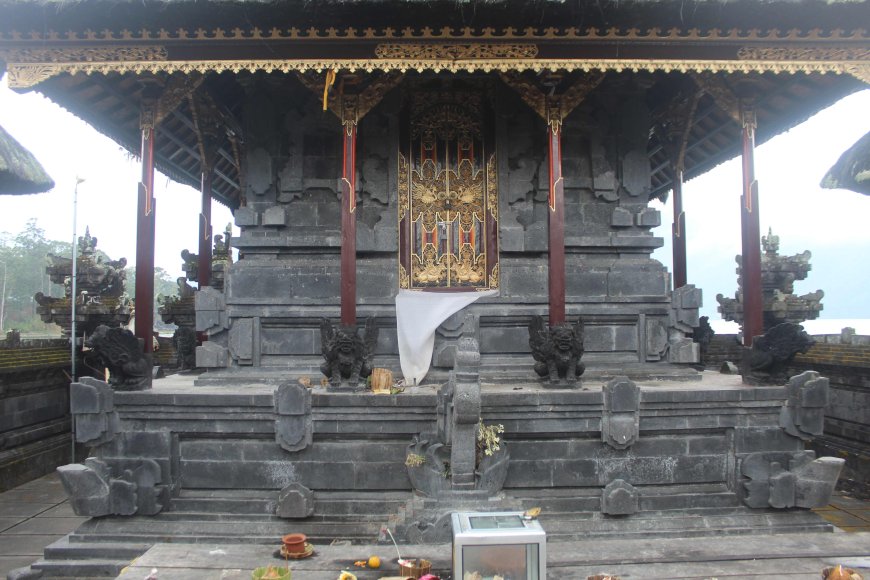
The main shrine of Pura Jati Segara (Photo Source: Personal Collection)
In this image, the main shrine is visible with a door adorned with intricate gold carvings, giving it a majestic and sacred appearance. On either side of the main staircase, there are guardian lion statues believed to protect the temple from negative energies.
This temple follows the concept of tri mandala, where the main mandala contains several shrines. Pura Jati only has two main shrines: Pasimpangan Bhatari Dewi Danu with the Palinggih Meru tumpeng telu and Palinggih Ida Bhatara Sakti Bhujangga Luwih. These two shrines are aligned facing west, flanking the main shrine that stands in the center.
The structure is built on a sturdy black stone foundation, symbolizing strength and spiritual steadfastness. The towering shape of the temple and the meru-shaped roof demonstrate respect for the gods, particularly Dewa Baruna, the sea and water deity in Balinese Hindu mythology. Every element of this shrine, from the ornaments to the carvings on the door and pillars, reflects the refinement of Balinese sculptural art that has been passed down through generations.
